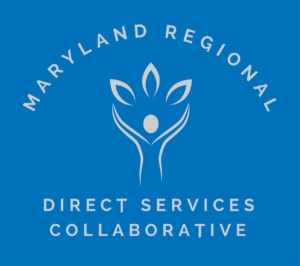By Robyn Stone
Each one of us must be honest about what we can do better to support and strengthen the LTSS workforce—here and now, and with the resources currently at our disposal, writes Robyn Stone.

During my 40-year career in the field of long-term services and supports (LTSS), I’ve written my fair share of words—in journal articles, Congressional testimony, research reports, and blogs like this—about the workforce challenges that providers of aging services have faced for as long as I can remember.
Somehow, this blog feels different.
What’s changed my perspective? Three things:
First, COVID has been a gamechanger, pushing our decades-long workforce discussions to a whole new level of priority. Over the past 18 months, we’ve learned the hard way how much we need the direct care professionals who provide the bulk of hands-on care in our organizations. We’ve also learned—again, the hard way—just how difficult those caregiving jobs can be.
Second, we now have allies in the White House who are paying attention to workforce issues. That gives us an unprecedented opportunity to get those issues on the federal radar screen so providers can get the support they need to strengthen the LTSS workforce.
Finally, and most importantly in my view, we have a plan—a good plan—to address our workforce challenges. That plan is described in LeadingAge’s recent visioning paper, Feeling Valued Because They ARE Valued: A Vision for Professionalizing the Caregiving Workforce in the Field of Long-Term Services and Supports.
Our vision consists of six strategies for professionalizing the direct care workforce—strategies that, taken together, can help us improve recruitment of new caregivers, reduce turnover among current caregivers, and ensure that a stable, high-quality workforce will be available to care for older adults with LTSS needs well into the future. Here they are in a nutshell:
- Expand the pipeline of potential caregivers.
- Enhance competency-based education and training, both initial and ongoing.
- Offer opportunities for professional caregivers to grow into meaningful LTSS careers.
- Increase compensation so direct care professionals can earn at least a living wage.
- Prepare “universal workers” who can master a core set of skills and work across care settings.
- Reform the LTSS financing system by exploring social insurance approaches to help all Americans pay for the services provided by these direct care professionals.
I urge you to read our visioning paper. As you do, I challenge you to find at least one strategy that you can participate in moving forward on the local level.
Yes, you heard me correctly: we need your action on the local level.
It’s tempting to assume that our workforce challenges can be solved through a big federal or state program that will finally give us all the money we need to strengthen the direct care workforce. Don’t get me wrong. Government has an important role to play here. But it would be a mistake for us to wait around for government action—or to depend only on the government to solve this complex problem.
Instead, we need to recognize that success in the LTSS workforce arena depends on a variety of stakeholders—providers, policymakers, consumers and their families, professional caregivers and their associations, local businesses, educational institutions, and others. Each of us must do our part while working together toward shared goals.
For example:
- Consumers and their families must value the work that their professional caregivers do, recognize that it is skilled work, and place a higher value on the women and people of color who carry out the bulk of that work.
- Educational institutions must step up to the plate to develop and conduct the quality training that this workforce desperately needs.
- Local businesses must invest in the LTSS workforce because they recognize that professional caregivers with increased purchasing power will become valued customers, and that a strong LTSS workforce will offer employees the support they need to balance work and family-caregiving responsibilities.
- LTSS providers must take steps within their own organizations to create a healthy workplace that empowers workers; offers them the right support, supervision, and training; and provides them with meaningful career pathways.
- Professional caregivers and their associations must advocate for themselves, and work with all stakeholders to bring about change.
The bottom line: Each one of us must be honest about what we can do better to support and strengthen the LTSS workforce—here and now, and with the resources currently at our disposal. We can’t do it all, but we must resolve to do what we can.
At the end of the day, the workforce crisis is a local crisis. It affects your organization and your community. And that’s where we have to start implementing real solutions. Federal and state officials can and must help. LeadingAge can and will help. But we can’t do it alone. We must do it together.
Original article can be found here.

